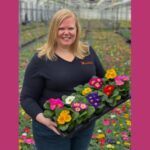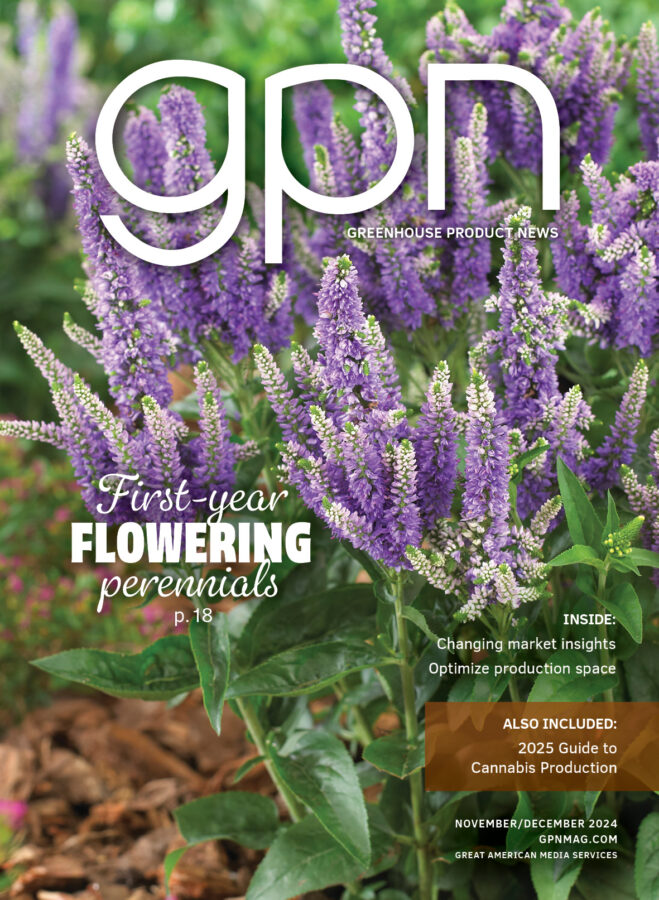Automating Greenhouse Irrigation
Watering plants isn’t as straight forward as it appears. When, where and how you apply water to your plants directly impacts their health and growth potential. If you’re watering your crops by hand, consider automating your irrigation system to help ensure you create a more robust, uniform, disease-free crop which in turn will maximize your greenhouse plant production and profit. To better understand the benefits of automating your irrigation system, let’s take a brief look at the mechanics of the traditional practice of hand watering.
Hand-Watering Irrigation Systems
Hand watering is one of the most common methods of irrigation in greenhouses across the world. Water and fertilizer are typically delivered to the plant foliage in addition to the surface of the soil. Proper watering techniques require practice and skill to manually deliver the appropriate amounts of water to the plant in addition to timing the watering between plants relative to the time of day.
Advantages: Growers can attend to each plant, which allows individual special needs to be addressed.
Disadvantages:
1. Labor intensive as plants regularly require water (even multiple times per day during hot days).
2. Water is difficult to recapture and reuse.
3. Higher concentrations of fertilizer and larger volumes of water are required as the plant doesn’t absorb all of what’s distributed as well as water being lost to evaporation or mishandling.
4. Foliar watering promotes faster distribution of fungal or bacterial diseases as water that crosses an infected leaf may pass across a large quantity of leaves beneath it.
5. Risk of insufficient watering and timing can yield drying, wilting, stunting or nutrient deficiency.
Automated Irrigation Systems
Automated irrigation systems allow the grower to irrigate and fertilize a large area of crops with minimal process waste and staffing.
Advantages:
1. Accommodates both overhead (misting, booms, etc.) and root zone (drip, NFT, flood floors, cascade floors, etc.) watering systems.
a) Overhead watering is good but still comes with foliar-based disadvantages from overhead watering (discussed above).
b) Root zone watering is ideal as it minimizes water and fertilizer use while decreasing the potential for foliar damage and drying.
2. Greatly reduce or eliminate labor and the potential for human error.
3. Water and fertilizer use can be minimized as these systems can more readily accommodate recycling of water.
4. Saves time as similar plants can be grouped together and watered in single or multiple zones.
5. Sensors can monitor how much water and fertilizer your plants are getting.
6. Can program control system based on manual settings (time, moisture, EC, etc.) and/or make decisions based on local weather station parameters.
7. Grower can remotely monitor control crop based on individual zone watering needs while managing the entire cycle of the crop.
8. Even, consistent watering yields a more consistent crop.
9. Can create a zero runoff system. As in Europe, we’re seeing more stringent water use restrictions in the United States especially near watershed zones.
10. Economy of scale: payback can be achieved for all sizes of projects but generally speaking, the larger the project, the more economically feasible.
Disadvantages: Requires higher initial capital investment for the distribution system and controls.
Summary
Overall, greenhouses can be irrigated automatically so growers can water crops with minimal staff while maintaining time to inspect and manage the crop growth.
Subirrigation systems (root zone watering) such as flood floors or cascade floors prove to be the some of the most flexible systems. Because the entire floor is flooded at once by larger transmission piping, plants intake water by capillary action and there is no need for above-ground distribution piping to each crop container. Expanding future zones as your greenhouse grows can have a low investment cost (mainly transmission piping extension and additional zone valves). Flood/cascade floors have consolidated equipment which reduces operations and maintenance costs. And it’s a green solution as you’ll recycle 100 percent of your water and have zero runoff. And because a flood or cascade style system can be fully automated, this equips the grower with both operational and fiscal advantages that may not be realized in alternative systems.
Greenhouse irrigation automation is a proven standard in Europe. As greenhouses continue to become more popular in the United States (especially with the newer trend towards vegetable production in local markets), automation will grow toward becoming the standard as legislation regarding water use and runoff becomes stricter. So if you’re still hand watering your plants, consider looking into automated systems to bolster your plant production and keep risk at a minimum.


 Video Library
Video Library 



















